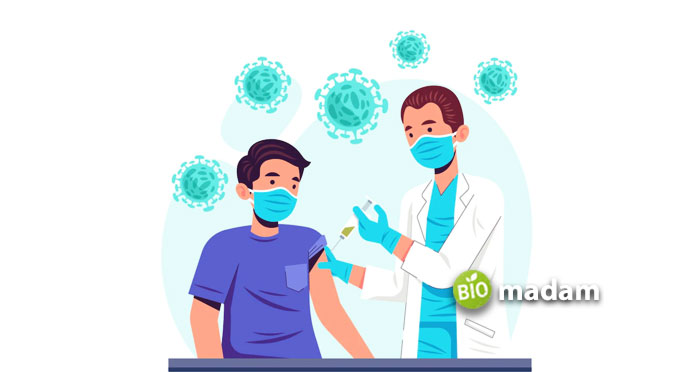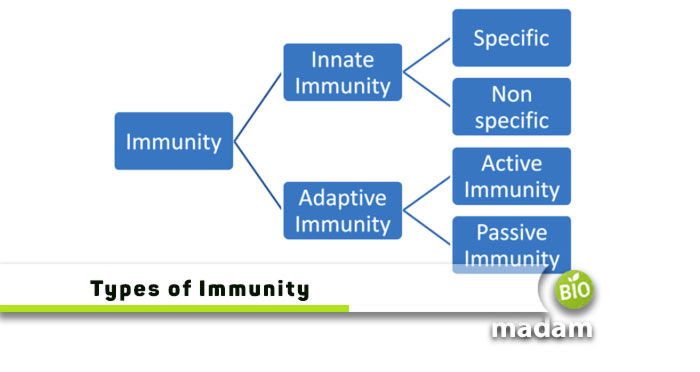Our environment comprises hundreds and thousands of microscopic organisms. Some of them are important for life, yet others are disease-causing. Despite having so many disease-causing microbes around us, we do not get sick that often. Have you wondered why?
Our immune system helps protect us from pathogens. The immune system is the body’s defense mechanism made of cells, different tissues, and organs. The cells, tissues, and organs work together to fight any invading foreign object that may cause harm. These foreign bodies are known as antigens. One example of an antigen is an allergen. Allergens are those foreign bodies that cause an allergic reaction when interacting with the body systems.
Here’s everything you need to know about the types of immunity and how they work.
What is Immunity?
Immunity refers to the body’s ability to fight pathogens. The immune system works by identifying a foreign antigen and developing antibodies against it. White blood cells are important components of the immune response. The types of antibodies are IgA (Immunoglobulin A), IgE, IgG, IgM, and IgD. which are the globular proteins They comprise globular proteins. Immunoglobulins detect the antigen and initiate a suitable response. Either they kill the pathogen themselves or activate killer T cells to act on it. All the antibodies and immune cells together form the immune system.
The immune system is of two types; Innate and Adaptive.
Innate Immunity
As the name indicates, innate immunity is the one present in your body since birth. It is the body’s first line of defense when it comes in contact with a pathogen. It indicates to the body about an invasion, and the systems use physical and chemical barriers to kill the invader before it causes damage. These barriers collectively protect you from viruses, bacteria, parasites, and other pathogens.

Components of Innate Immunity
Physical Barriers
Physical barriers include the skin, body hair, eyelashes, nose hair, and the gastrointestinal tract. When a specific antigen tries entering your body, the skin makes sure to keep it from penetrating. Furthermore, you may experience coughing or sneezing if the entrance route is nose or mouth. All the systems work together to prevent the pathogen from entering.
Chemical Barriers
Chemical barriers are the fluids and secretions that trap the foreign particle before entering the body. They include sweat and tears. Moreover, some secretions like mucus in the gastrointestinal tract, saliva, and ear wax restrict the movement into further organs.
Types of Innate Immunity
There are two widely studied types of innate immunity depending on their action on the pathogen.
Specific Immunity
Specific immunity is the action of immune cells or organs on a specific stimulus only. They do not react to any other indication. For example, the stomach’s low pH only acts on specific bacteria and yeast present in food. On the other hand, skin helps kill bacteria on the skin and stops them from entering the body.
Non-specific Immunity
Contrary to specific, non-specific immunity is based on immunoglobulins (IgA, IgD, IgE, IgG, IgM). They bear the responsibility of attacking various pathogens and throwing them out of the body. They also include dendritic cells, mast cells, neutrophils, eosinophils, macrophages, and natural killers.
Adaptive Immunity
Adaptive immunity is the opposite of innate immunity. An organism acquires it through the course of its life. When an antigen comes in contact with the body’s immune system, it produces antibodies. The body takes around 14 days to create antibodies. These antibodies do not fight the pathogen one time only. They remember the antigen and act on it on repeated interaction. Adaptive immunity is categorized as active Immunity and passive immunity.

Components of Adaptive Immunity
Immunoglobulins
Immunoglobulins are produced in antibody-mediated immunity or humoral immunity. They form in response to an antigen. B-lymphocytes produce antibodies, also called immunoglobulins, to protect against toxins and pathogens. They are typically present in body fluids or humor.
Macrophages
The other cells involved in adaptive immunity are macrophages and CTLs. They make up cell-mediated immunity. It destroys the harboring of antigens, multicellular parasites, cancer cells, and transplanted tissues. It is crucial as the body may reject a transplanted organ taking it as a foreign body.
Types of Adaptive Immunity
Active Immunity
Active immunity is the immunity developed by a person’s immune system upon exposure to an antigen. Interaction with a foreign object stimulates your body to produce an immune response according to the antigen. Active immunity involves B cells, T cells, and antigen-presenting cells. It is a long-term immunity and keeps a memory of the antigen.
Active immunity offers effective protection against infection and disease. However, it may not be the best choice for immunocompromised patients. Disease-induced antibodies and vaccines are examples of active immunity. When a virus or bacteria enters your body, the body develops antibodies against the antigen. For example, if you have had chickenpox, your body now has antibodies against it. You are quite less likely to experience it again.
Passive Immunity
Passive immunity is given to a person through another. Placenta and breast milk are the most common examples of passive immunity. The fetus obtains immunity through the placenta in the developing stage. Later, breast milk helps protect the child from diseases as the baby’s immune system takes time to develop. Immune cells from another person are also a source of passive immunity. It includes transfusing blood from a person containing antibodies against a particular disease.
Plasma transfusion in Covid patients is an example of passive immunity through immunoglobulins. It is used in conditions where you cannot wait for 14 days for the person to acquire immunity actively. However, passive immunity does not possess an immunological memory. Though it is suitable for immunocompromised patients, it may not provide complete immunity.
The Bottom Line
The immune system is the body’s defense mechanism against antigens and pathogens. Immunity is divided into two types, innate and acquired immunity. They are further classified as specific, non-specific, active, and passive immunity giving 4 types of immunity. Innate immunity is by birth, whereas adaptive immunity is acquired over time. Body systems and immune cells work together to fight disease-causing pathogens.

Anna has completed her degree in Pharmacy from the University of Hawaii. She is serving as a research assistant in a pharmaceutical company. She had a great interest in writing blogs, traveling to different parts of the US, and trying delicious recipes in her spare time.

